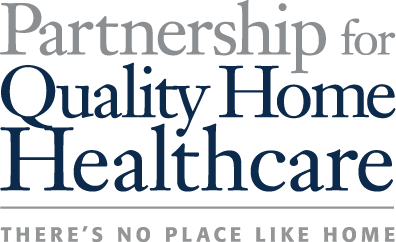April 8, 2021
Five Health Industry Trends on Which Home Healthcare Can Capitalize
By Annie Erstling, Chief Strategy Officer at Forcura
The Partnership’s Corporate Leadership Council (CLC) members are companies with similar policy interests and business objectives to the Partnership who support efforts to improve the quality and efficiency of home healthcare for our nation’s seniors. In a new blog series, the Partnership has invited the CLC member companies to share more about their latest work.
Following the height of a global health crisis, many discussions have focused on what can be learned and which new developments created out of necessity will likely have lasting, transformative effects on the delivery of healthcare tomorrow.
In the U.S., the pandemic has illustrated the value of the home healthcare model. In a 2020 report produced by Forcura, What Happened and What’s Next in Post-Acute Care, we examine the following trends with this sector in mind, and discuss which opportunities exist to help businesses grow and thrive.
1. Interoperability will move closer to realization

Individuals and organizations have been working for years to build a technological foundation that makes care transitions safer and more holistic. More recently, government and industry volunteers have collaborated to advance a standard for data exchange between settings, providers, patients, and other key stakeholders across healthcare. This standard would help all parties navigate the complexities that often lead to needless financial and administrative burdens and compromise the quality and continuity of care.
Now is the time to take stock of your technology and invest in interoperable systems that will make your home healthcare business more efficient, accurate and able to provide the best for your patients.
2. Healthcare will become increasingly consumer-driven
Just as other areas of technology have spread throughout society and empowered consumers with knowledge, options, and a sense of independence, so too have patients been given more control regarding how they receive care. With easier access to personal health records and digital care alternatives, people of all ages are becoming more discerning and want to choose which steps in their health journeys are best suited for them.
While home healthcare is already poised to take advantage of this shift toward patient centricity, experts note that for hospital-at-home models to truly succeed, agencies will need to focus on upskilling staff and be more creative, flexible and compassionate than ever.
3. Payment models and reimbursement plans will have considerable influence
As CMS continues to observe rules and extensions created in response to the pandemic, most of the 2020 changes will become permanent. Expect ongoing payment changes aimed at driving value to the system. Medicare Advantage plans are also expected to proliferate in 2021, with MA market penetration expanding from 39 percent currently, to 50 percent in 10 years. In addition, a majority of these plans will provide services that typically fall under home healthcare offerings, so providers will need to be more data-driven as their value-based contracts increase.
Although many agencies, particularly single-line service providers, may struggle in 2021 to repay AAP loans granted by CMS during Covid-19, those who are proactive, fully understand the impacts of different payment models, learn from the lessons of acute care payment reform, and forge strong partnerships should see more control over their bottom lines.
4. Healthcare businesses will diversify their care models
Taking their cue from home-based care, which saw a burgeoning of services during the pandemic, many providers are reimagining their operations to respond to demand for greater value and better patient outcomes in various settings. As organizations scramble to retain as much patient share as possible, all care models including home-based services will need to seek out valuable, nontraditional alliances. This means embracing entities from throughout the care continuum to transform the consumer experience.
Experts believe the home health community has vast potential to lead this new integration of healthcare systems. It has already demonstrated how a leaner, more productive, nimble and technologically savvy model can undergo rapid transformation beyond just temporary and elderly care. Many see an opportunity to build a healthcare structure that begins with home healthcare and expands outward from there.
5. Structural inequities will require solutions
The pandemic has been likened to our “Katrina moment,” highlighting disparities that most Americans already knew existed. Discrimination due to race, gender, disability, education, income, sexual orientation and even geographic location present the entire healthcare industry with the challenge of improving access and quality for everyone.
For meaningful change to occur, all care models must work in tandem to increase their collection and use of socio-demographic data, boost cultural competency training, develop leadership diversity, and strengthen community partnerships. This will pressure other industries and political leaders to provide support through additional allocation of resources.
Learn more interesting details by accessing the entire report on Forcura’s website.
As Chief Strategy Officer, Annie Erstling is responsible for driving growth at Forcura. She oversees the company’s strategic planning, product innovation, marketing and strategic partnerships. She has experience launching new brands, products and companies across the healthcare and technology sectors. Connect with Annie on LinkedIn.
